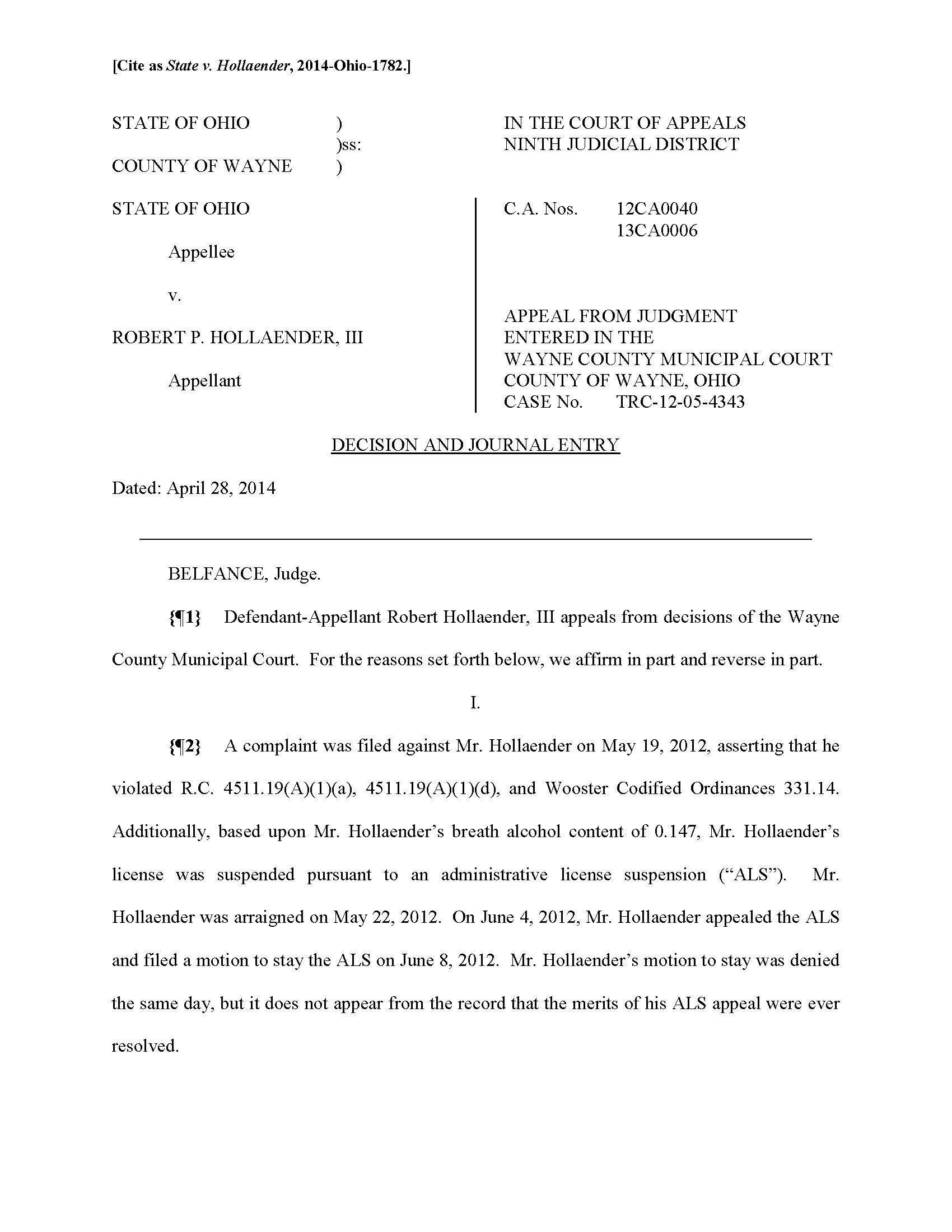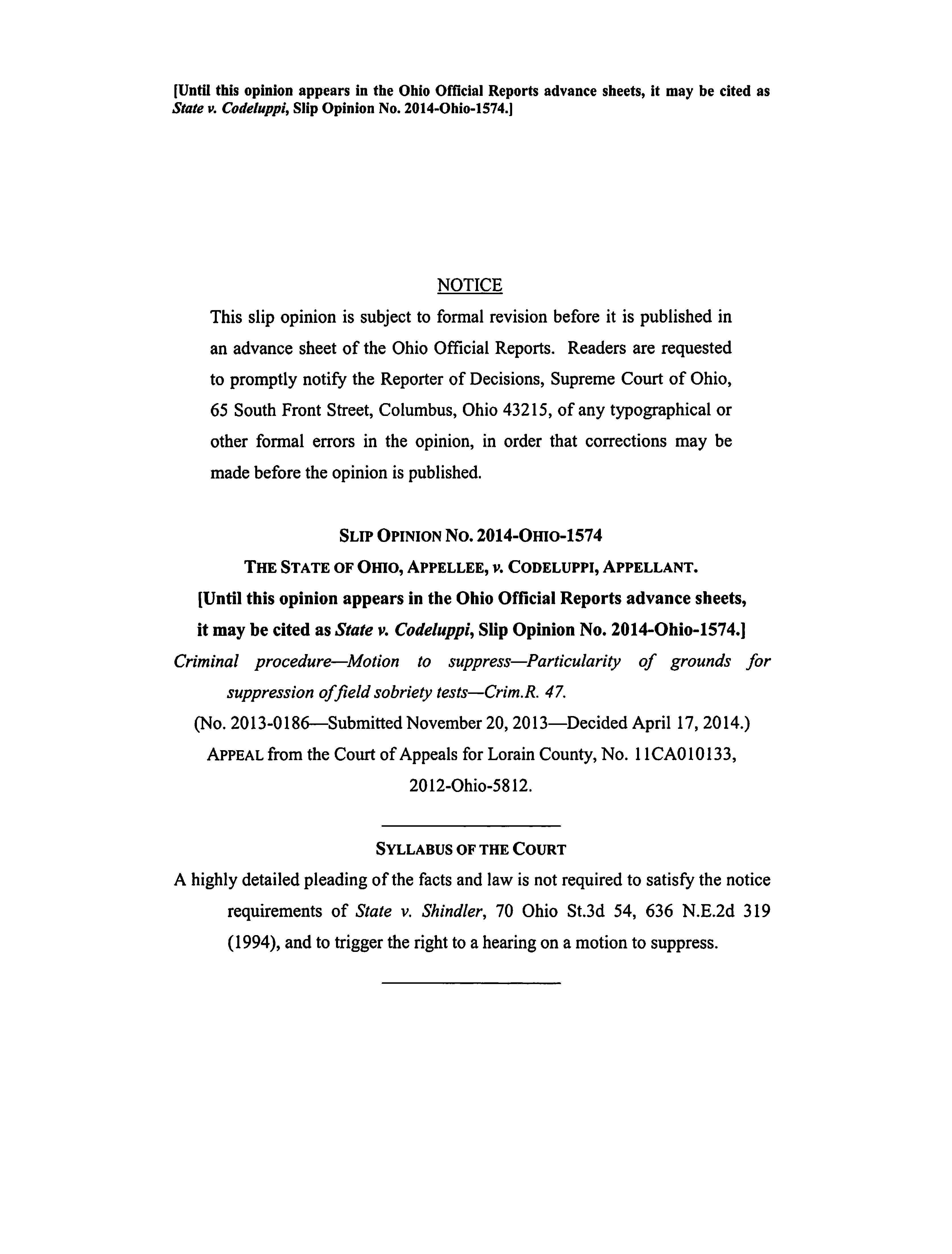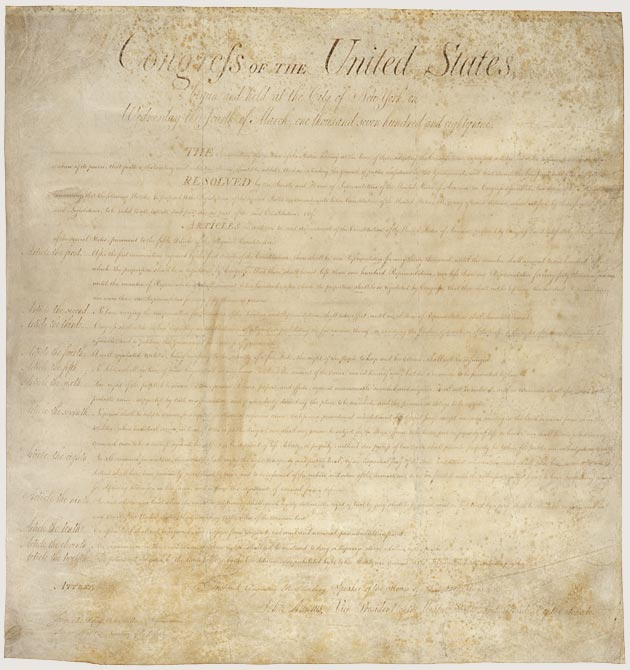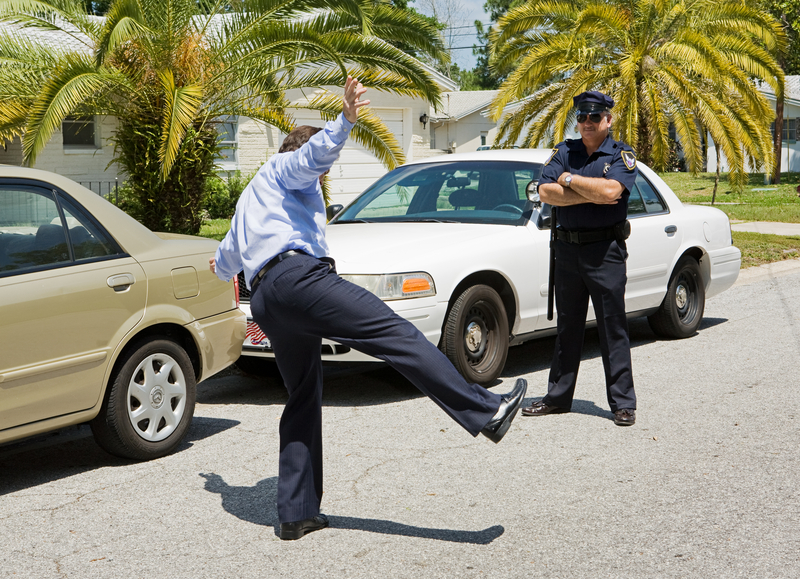 What does it mean when the law says an officer must have ‘probable cause’ to arrest a person for a DUI/OVI? Common sense tells us the evidence observed by the officer must lead to the conclusion that the person is probably under the influence. Common sense and case law tell us the officer must consider all of the evidence in making the arrest decision. A recent case in the U.S. Sixth Circuit Court of Appeals addresses this issue and implies that evidence of sobriety has little meaning in the probable cause determination.
What does it mean when the law says an officer must have ‘probable cause’ to arrest a person for a DUI/OVI? Common sense tells us the evidence observed by the officer must lead to the conclusion that the person is probably under the influence. Common sense and case law tell us the officer must consider all of the evidence in making the arrest decision. A recent case in the U.S. Sixth Circuit Court of Appeals addresses this issue and implies that evidence of sobriety has little meaning in the probable cause determination.
Articles Posted in DUI/OVI laws and cases
Right To Speedy Trial In Ohio DUI/OVI Case Violated By Court’s Delayed Ruling On Motion To Suppress
 In Ohio DUI/OVI cases, calculating speedy trial time can be complex. As a general rule, the trial must be held within 90 days of the arrest or summons. There are, however, many exceptions to this general rule. When one of the exceptions occurs, time is “tolled” (that time does not count toward the 90-day limit). One exception occurs when the defendant files a motion for discovery, and another exception occurs when the defendant files a motion to suppress evidence. A recent decision by an Ohio Court of Appeals addresses the application of speedy trial laws to Ohio DUI/OVI cases.
In Ohio DUI/OVI cases, calculating speedy trial time can be complex. As a general rule, the trial must be held within 90 days of the arrest or summons. There are, however, many exceptions to this general rule. When one of the exceptions occurs, time is “tolled” (that time does not count toward the 90-day limit). One exception occurs when the defendant files a motion for discovery, and another exception occurs when the defendant files a motion to suppress evidence. A recent decision by an Ohio Court of Appeals addresses the application of speedy trial laws to Ohio DUI/OVI cases.
Supreme Court Clarifies Requirements For Motions To Suppress In Ohio DUI/OV Cases
 Two days ago, the Ohio Supreme Court issued a decision clarifying how specific a motion to suppress must be for the defendant to receive an evidentiary hearing on the motion. In State v. Codeluppi (2014), the Court concluded: “[A] highly detailed pleading of the facts and law is not required to satisfy the Shindler notice requirements and to trigger the right to a hearing on the motion to suppress.” This conclusion affirmed the Court’s decision from a decade ago in State v. Shindler (1994). The Codeluppi decision hopefully will end uncertainty about the specificity required for motions to suppress in Ohio DUI/OVI cases.
Two days ago, the Ohio Supreme Court issued a decision clarifying how specific a motion to suppress must be for the defendant to receive an evidentiary hearing on the motion. In State v. Codeluppi (2014), the Court concluded: “[A] highly detailed pleading of the facts and law is not required to satisfy the Shindler notice requirements and to trigger the right to a hearing on the motion to suppress.” This conclusion affirmed the Court’s decision from a decade ago in State v. Shindler (1994). The Codeluppi decision hopefully will end uncertainty about the specificity required for motions to suppress in Ohio DUI/OVI cases.
Court Concludes Traffic Stop Was Not Justified By Visual Speed Measurement In Ohio DUI/OVI Case
 In most Ohio DUI/OVI cases, the evidence includes police officer testimony and police cruiser video. Officer testimony is sometimes not corroborated by the recording from the cruiser video. In such a situation, a judge or jury has to decide if they believe the officer or their own eyes. Such a situation arose in the recent case of State v. Jarosz, and the judges believed their eyes.
In most Ohio DUI/OVI cases, the evidence includes police officer testimony and police cruiser video. Officer testimony is sometimes not corroborated by the recording from the cruiser video. In such a situation, a judge or jury has to decide if they believe the officer or their own eyes. Such a situation arose in the recent case of State v. Jarosz, and the judges believed their eyes.
When Can Officers Stop Drivers Based On An Anonymous Tip?
 The caller was anonymous, and there was little evidence corroborating the caller’s claim. He or she called 9-1-1 and reported she was driving southbound on Highway 1 and was just run off the road. The caller described a silver Ford F150 truck with a California license plate. It did not take long before officers spotted a silver F150 and pull it over based on the anonymous caller’s report. After stopping the truck, the officers ended up finding and seizing marijuana. The question is whether this stop was lawful.
The caller was anonymous, and there was little evidence corroborating the caller’s claim. He or she called 9-1-1 and reported she was driving southbound on Highway 1 and was just run off the road. The caller described a silver Ford F150 truck with a California license plate. It did not take long before officers spotted a silver F150 and pull it over based on the anonymous caller’s report. After stopping the truck, the officers ended up finding and seizing marijuana. The question is whether this stop was lawful.
Margin Of Error In Ohio DUI/OVI Alcohol Tests

From your bathroom scale to a police officer’s laser gun, every measurement device has a margin of error. For a device to be considered reliable, the margin of error must be known (and should be small!). In a recent Ohio DUI / OVI case, the court decided the admissibility of test results from a device with an unknown margin of error.
Ohio Traffic Cases And Sealing/Expungement Of Records
 As a DUI/OVI attorney, I am frequently asked if a person can seal/expunge records for DUI/OVI offenses and other traffic offenses. The answer is “no”: Ohio Revised Code section 2953.36 says the records for DUI/OVI convictions and other traffic offense convictions cannot be sealed. Therefore, a conviction for DUI/OVI or other traffic offenses is a permanent record.
As a DUI/OVI attorney, I am frequently asked if a person can seal/expunge records for DUI/OVI offenses and other traffic offenses. The answer is “no”: Ohio Revised Code section 2953.36 says the records for DUI/OVI convictions and other traffic offense convictions cannot be sealed. Therefore, a conviction for DUI/OVI or other traffic offenses is a permanent record.
Deficient Field Sobriety Tests Are Inadmissible In Ohio DUI/OVI Cases
 Standardized field sobriety tests (SFSTs) are administered in nearly every DUI/OVI case in Columbus and central Ohio. A previous post in this blog analyzed the standard for admitting the tests as evidence in court: the SFSTS must be administered in substantial compliance with the officers’ training manual for the tests to be admissible. A recent case in an Ohio appellate court applied that standard and concluded the tests were not admissible in Middleburg Heights v. Gettings.
Standardized field sobriety tests (SFSTs) are administered in nearly every DUI/OVI case in Columbus and central Ohio. A previous post in this blog analyzed the standard for admitting the tests as evidence in court: the SFSTS must be administered in substantial compliance with the officers’ training manual for the tests to be admissible. A recent case in an Ohio appellate court applied that standard and concluded the tests were not admissible in Middleburg Heights v. Gettings.
Court Rescues Intoxilyzer 800 For Use In Ohio DUI/OVI Cases

But for a technical legal issue that may only be interesting to an Ohio DUI/OVI lawyer, the case of State v. McMahon would be pretty generic. An officer pulled him over for speeding, noticed the odor of alcohol, administered field sobriety tests, arrested him, gave him a breath test on an Intoxilyzer 8000, and charged him with O.V.I. McMahon filed a motion to suppress the results of the breath test, claiming the Department of Health was required to make rules for obtaining ‘operator access cards’ (to operate the I-8000) and never did. The trial court agreed with McMahon and threw out the breath test.
Erin Brockovich Case Illustrates Tough Sentences For Boating Under The Influence In Ohio
 What happens in Vegas stays in Vegas, but what happens near Vegas gets broadcast for the world to see. That’s what Erin Brockovich found out a few days ago when she was charged with Boating Under the Influence on Lake Mead, just outside Las Vegas, Nevada.
What happens in Vegas stays in Vegas, but what happens near Vegas gets broadcast for the world to see. That’s what Erin Brockovich found out a few days ago when she was charged with Boating Under the Influence on Lake Mead, just outside Las Vegas, Nevada.
After reading the news coverage of her case, I compared the B.U.I. laws of Ohio and Nevada and concluded Ohio has relatively tough sentences for boating under the influence.
 Columbus OVI/DUI Attorney Blog
Columbus OVI/DUI Attorney Blog

